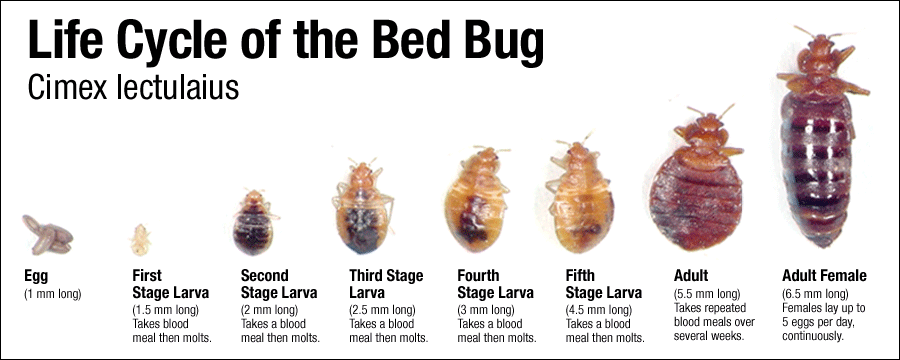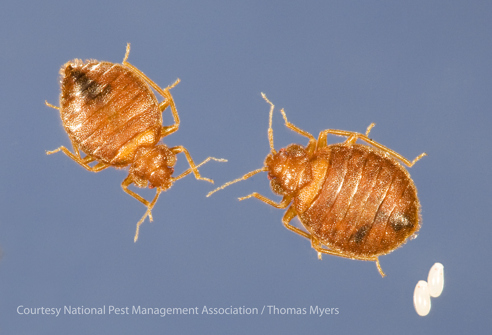Affordable Arlington Exterminator Services to Eliminate Pests Fast
Obtain Educated About the Kinds of Bug Control Approaches and Their Advantages for House Owners
Understanding the various parasite control techniques readily available to home owners is essential for reliable pest management. House owners that are knowledgeable can make strategic choices that not only address pest issues yet also enhance the overall high quality of their living environment.
Chemical Bug Control Techniques
Chemical bug control approaches are an important element of incorporated pest monitoring approaches for property owners seeking effective services to pest problems. These techniques involve the application of chemical substances created to remove or prevent pests that threaten personal residential property, wellness, and convenience. Usual chemicals used consist of pesticides, fungicides, rodenticides, and herbicides, each tailored to target details pests.
The main benefit of chemical bug control is its quick efficiency; several solutions give prompt results, reducing pest populations substantially in a brief time. In addition, advancements in chemical formulas have actually caused items that are much more eco-friendly and have reduced poisoning levels for non-target microorganisms when applied appropriately.

Biological Insect Control Strategies
All-natural bug control methods have obtained prestige as home owners seek more secure and extra sustainable choices to traditional chemical approaches. Organic insect control techniques make use of all-natural killers, bloodsuckers, or microorganisms to take care of bug populations efficiently. This method is not only eco friendly but also lessens the danger of damage to non-target species, consisting of useful bugs and wildlife.
One of one of the most typical biological control approaches includes introducing all-natural killers right into the environment. For instance, ladybugs can be used to control aphid populations, while nematodes target soil-dwelling insects like grubs. In addition, parasitoids-- organisms that reside on or within a host-- can be used to regulate specific parasite types by laying eggs inside them, ultimately causing their death.
One more approach is the usage of biopesticides, which are originated from all-natural products such as plants, minerals, or microorganisms (bed bug exterminator). These products can efficiently target insects while posing minimal danger to pets and humans. In general, organic pest control strategies provide property owners with an efficient means of pest administration that lines up with ecological principles, promoting a much healthier living atmosphere while minimizing reliance on synthetic chemicals
Mechanical Bug Control Techniques
Mechanical pest control approaches encompass a selection of approaches that literally protect against or get rid of insects without using chemicals. These methods are especially valuable for property owners looking for environmentally friendly options while making certain the safety and security of their living rooms.
One common technique is the use of barriers, such as displays, traps, and internet, which protect against bugs from getting in homes or specific locations. For example, mounting window displays can efficiently keep insects out, while using physical obstacles around gardens can discourage bigger bugs like deer or bunnies. Furthermore, mechanical catches created for rodents can record and remove these from this source bugs without the demand for hazardous compounds.
An additional reliable method involves using brooms and vacuums to remove pests directly from surfaces. Routine cleaning and upkeep can significantly lower bug populations by removing food resources and hiding spots. Furthermore, using devices like ultrasonic pest repellents can discourage numerous pests through sound waves that are undesirable to them however inaudible to people.
Cultural Bug Control Practices
Social bug control techniques focus on customizing the atmosphere and administration strategies to develop conditions that are less for pest infestations. These techniques are essential in preserving a well balanced community and lowering the reliance on chemical interventions. By altering farming techniques, house owners can properly prevent insects while advertising plant health and wellness.
One typical approach consists of crop turning, which interferes with the life cycles of parasites by altering the kinds of plants grown in a specific location (bed bug exterminator). This not just lessens pest populations yet likewise enhances soil health. Furthermore, intercropping-- growing varied plants in closeness-- can confuse pests and lower their fire ants ability to locate their favored host plants
Water administration is another critical element of cultural methods. Appropriate irrigation methods can avoid standing water, which acts as a breeding place for mosquitoes and other insects. Furthermore, keeping sanitation in and around the home, such as consistently removing debris and food waste, can dramatically reduce parasite destination.
Including these cultural techniques into a thorough parasite administration method allows house owners to develop a setting that normally prevents pests, consequently improving the effectiveness of various other control methods while advertising lasting horticulture and landscape design.

Integrated Insect Management Approaches
Integrated Insect Management (IPM) represents an all natural strategy that combines various approaches to efficiently manage bug populations while lessening ecological effect. This technique integrates organic, social, physical, and chemical techniques to achieve sustainable pest control. By assessing pest populations and their natural adversaries, IPM emphasizes tracking and determining click to read parasites prior to executing control actions.
One of the core concepts of IPM is the use of thresholds, which establish the level of insect task that warrants treatment. This ensures that therapies are applied only when needed, lowering the dependence on chemical pesticides. Organic control approaches, such as presenting all-natural predators or parasites, work in combination with cultural methods like crop turning and environment adjustment to interfere with pest life cycles.
In addition, IPM urges making use of least-toxic chemical choices when intervention is essential, prioritizing items that posture minimal danger to non-target microorganisms and the setting. For property owners, taking on IPM approaches not only boosts the effectiveness of insect management yet additionally advertises a much healthier living atmosphere, fostering biodiversity and minimizing chemical direct exposure. Eventually, IPM empowers home owners to make enlightened choices that balance insect control with ecological obligation.
Final Thought
In verdict, comprehending the different bug control techniques encourages property owners to make informed choices concerning pest administration. Each technique-- chemical, organic, mechanical, cultural, and incorporated bug management-- provides distinct advantages that cater to different needs and choices.
Comprehending the numerous insect control techniques readily available to property owners is essential for reliable bug management.Chemical parasite control techniques are a vital element of integrated parasite management approaches for house owners looking for effective services to pest problems. On the whole, biological parasite control strategies provide house owners with an efficient means of parasite monitoring that straightens with eco-friendly concepts, promoting a much healthier living atmosphere while decreasing dependence on artificial chemicals.
Cultural insect control techniques focus on customizing the setting and management strategies to produce conditions that are much less conducive to pest problems.In conclusion, comprehending the numerous pest control techniques empowers home owners to make educated decisions concerning pest management.